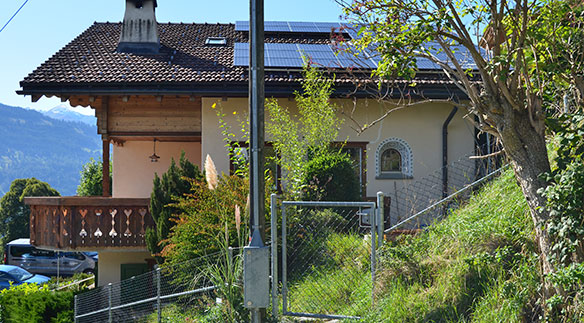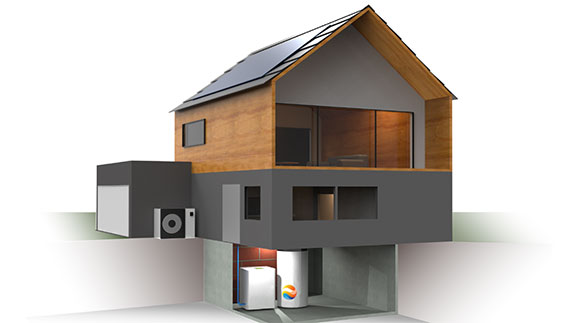
80 percent of the energy consumption of Swiss households comes from space heating and hot water preparation. There is great potential here to save CO2 and become independent of fluctuating electricity prices. Photovoltaics, combined with a heat pump, are therefore the solution of choice for many homeowners. However, one problem remains: If the sun does not shine, the photovoltaics do not generate any energy and therefore cannot drive the heat pump. That’s why most owners of single- or multi-family homes also opt for a buffer tank filled with water. This is warmed up with excess energy from the photovoltaic system via a heat pump. This stores heat for nights and gloomy days. The problem is that water storage tanks require a lot of space, and it is not available everywhere or is expensive. Cowa Thermal Solutions AG, a start-up from Lucerne University of Applied Sciences, has developed a new storage option that increases capacities without taking up more space.
Sustainable and cost-effective
«The core of our technology is the storage material. It is based on inexpensive salt hydrates whose storage density is up to three times higher than that of water. Our heat storage devices are correspondingly more efficient,”
says cowa founder and co-CEO Remo Waser. The material is not toxic; The recyclable raw materials are also used in the food industry.
“This makes our storage significantly more sustainable and cheaper than other technologies such as electric batteries,” emphasizes Waser.
The salt hydrates are in capsules that are used to fill the storage container. In the end, the heating water makes up around 40 percent; 60 percent is filled by the heat storage capsules.
These absorb the heat from the heating water and release it again when it cools down.
“The cowa buffer storage can store two to three times more energy than a conventional water storage tank of the same size without capsules,”
adds Jan Allemann, CRO of cowa. Due to the higher capacity and the loss-free transfer of energy, the storage unit becomes the ideal link between the heat pump and the photovoltaic system.
From the university to the market
As part of their master’s thesis, Waser and his colleagues researched salt hydrates and their long-term stability and then continued to work on the topic for four years until it became a usable product: the cowa booster storage. It was intensively tested in the field during the last heating season and is now available on the market.
The tests have shown that thanks to cowa technology, heating self-sufficiency has doubled, thus halving the dependence on the power grid.
Cowa Thermal Solutions AG – a start-up on the rise

cowa Thermal Solutions AG develops, produces and sells a new generation of heat storage solutions for building technology. The ambitious clean tech startup has set itself the goal of setting new standards in building technology and thus making its contribution to the energy and heat transition.
Thanks to the support of private investors, business angels and foundations such as the Swiss Climate Foundation and Smart-up, the funding program for innovation, entrepreneurship and self-employment at the Lucerne University of Applied Sciences, the company was able to build fully automated production systems that allow cost-effective production.
With Meier Tobler AG, a partner for the large-scale distribution of the products is already on board. In addition, initial discussions have already taken place regarding expansion into Germany and Europe.
Web:
https://cowa-ts.com/
Source:
Lucerne University of Applied Sciences and Arts, Oct 9, 2023
Also read:
